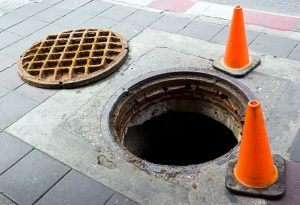Canada’s Infrastructure

The Federation of Canadian Municipalities recently released the Canadian Infrastructure Report Card 2019.
The report is the result of the combined efforts of a number of organizations: The Association of Consulting Engineering Companies Canada (ACEC), the Canadian Construction Association (CCA), the Canadian Parks and Recreation Association (CPRA), the Canadian Public Works Association (CPWA), the Canadian Society for Civil Engineering (CSCE), the Canadian Urban Transit Association (CUTA), the Canadian Network of Asset Managers (CNAM), and the Federation of Canadian Municipalities (FCM).
It examines a number of categories of infrastructure such as roads and bridges, public transit, solid waste, and wastewater. As regards wastewater infrastructure, the report notes that “of our linear assets (e.g., watermains, sewers), 30% are in fair or worse condition” and that “climate change puts an additional strain on these infrastructure systems”.
30% is a large number, representing almost a third of Canada’s wastewater infrastructure.
Looking at the “Comparison with 2016 Results”, it’s evident that the percentages of wastewater infrastructure rated “very poor”, “poor”, and only “fair” has increased over the last three years, even without taking into account the “unknowns”. It is also important to note that the data in this report applies to municipally-owned assets and does not include homeowner laterals.
The report goes on to say that “a large portion of linear wastewater assets are more than 50 years old” versus an ESL of 70-100 years “depending on the material”.
It’s clear that replacement or rehabilitation of the many thousands of kilometers of sewers and laterals is going to become increasingly imperative.
In the words of Bill Karsten, President of the Federation of Canadian Municipalities, “Good, reliable infrastructure supports our quality of life in communities across the country, so Canadians should find these results concerning.”
Recognizing the advantages of trenchless rehabilitation of crumbling wastewater infrastructure, more and more municipalities are reaching for CIPP systems.
Trenchless rehabilitation of sewers and laterals, rather than open-cut trenching, presents obvious advantages:
- takes a fraction of the time
- costs significantly less
- involves minimal disruption to traffic
- does not necessitate detour routes
- does not damage pavement or landscape
- creates significantly less noise and for a much shorter period of time
- does not create safety hazards
- does not create dust
- uses minimal fuel
Formadrain offers a true no-dig CIPP technology that rehabilitates pipes to a durable, structurally-sound finish.
Formadrain liners are composed of bi-directionally-woven fiberglass spread with an epoxy resin. Because they are not tubes, Formadrain liners will conform to different shapes and sizes and will transition sizes seamlessly. Formadrain liners are NSF 14 certified and ICC-ES certified. The liner’s mechanical properties (flexion and tension) exceed the minimum standards of ASTM F1216 by five times. A 13,000-hour creep test performed by CATT determined a 50-year modulus of flexural elasticity.
Additionally, Formadrain liners are environmentally friendly. They contain NO volatile organic compounds and pose no health risks.
For more information about the Formadrain no-dig system of pipe rehabilitation, contact Bruce Stevenson, Business Development Manager, at 1-888-450-3986 or Bruce@formadrain.com or get a free information pack.
